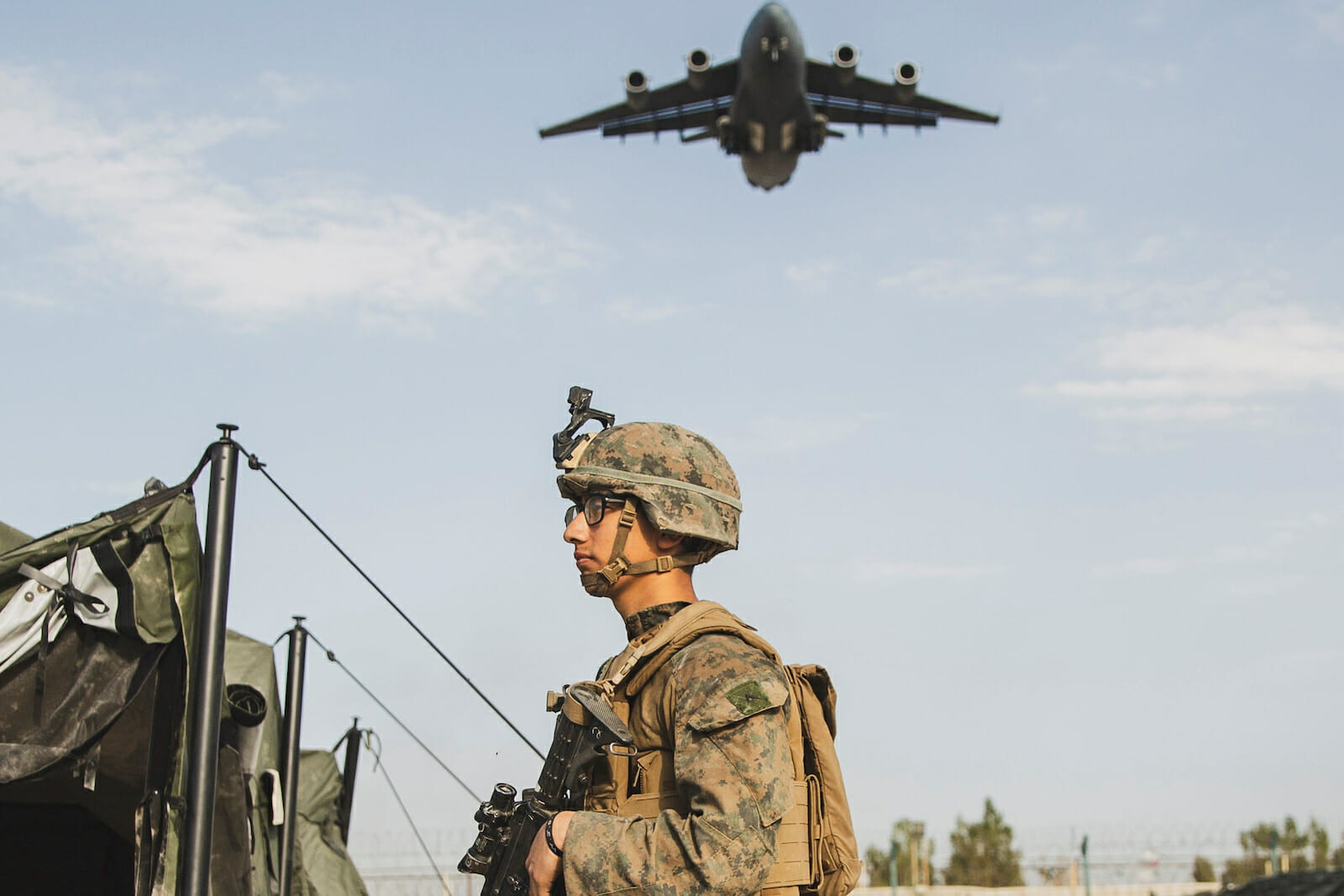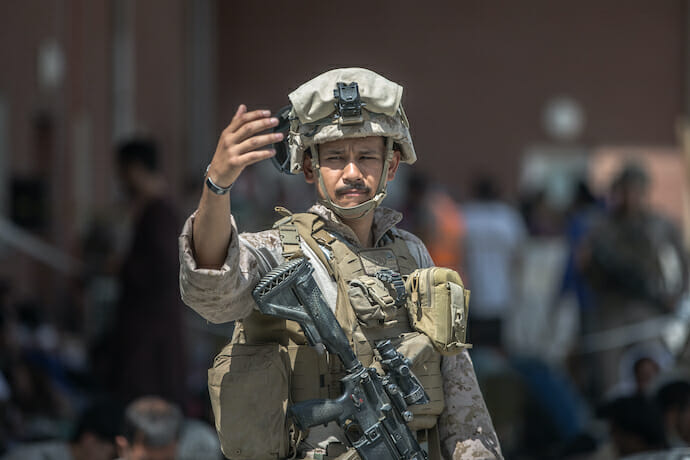
Droning Disasters: A U.S. Strike on Kabul
No more profoundly disturbing statement was needed. In the dying days of the official US departure from Kabul, a US drone etched its butcher’s legacy with a strike supposedly intended for the blood-lusty terrorist group ISIS-K, an abbreviation of Islamic State in Khorasan Province. Its members had taken responsibility for blasts outside Hamid Karzai International Airport that had cost the lives of at least 175 individuals and 13 US service personnel. Suicide bombers had intended to target “translators and collaborators with the American army.”
President Joe Biden promised swift retribution. “To those who carried out this attack, as well as anyone who wishes America harm, know this: We will not forgive. We will not forget. We will hunt you down and make you pay.” American “interests and our people” would be defended “with every measure at my command.”
In his sights was ISIS-K. “I’ve also ordered my commanders to develop operational plans to strike ISIS-K assets, leadership, and facilities.” A response “with force and precision” would take place “at our time, at the place we choose and a moment of our choosing.”
On August 28, an announcement by the Pentagon was made that two “high-profile” members of the group had been killed in a drone strike in Khorasan Province. That same day, the president warned that the group was likely to conduct another attack. The US military was readying itself.

The following day, to demonstrate such precision and choice, a vehicle supposedly carrying an unspecified number of suicide bombers linked to ISIS-K and speeding towards Kabul’s airport was struck in a second drone attack. The site of the attack, being a residential neighbourhood in the city, should have given room for pause to those precisionists in the military.
The strike was meant to leave a lasting impression upon ISIS-K fighters. Initially, US officials were pleased to inform the Associated Press that “multiple suicide bombers” had perished in the attack. “US military forces conducted a self-defence unmanned over-the-horizon airstrike today on a vehicle in Kabul, eliminating an imminent ISIS-K threat to Hamid Karzai International Airport,” stated US Central Command spokesperson Capt. Bill Urban.
The outcome of the strike was apparently something to be proud of. “Significant secondary explosions from the vehicle indicated the presence of a substantial amount of explosive material.” But this came with a rounding caveat. “We’re assessing the possibilities of civilian casualties, although we have no indications at this time.”
The story started to congeal over interviews, discussions, and threads. A dribble of information suggested loss of civilian life. A number quickly emerged in the flood that followed: ten family members had lost their lives. From the New York Times, there was Matthieu Aikins patching things together. Bodies were named: Somaya, daughter of Zemari. Farzard, Zemari’s son, also killed. The narrative twists, inverts, and disturbs more: Zemari’s nephew, Naser, was an Afghan army officer, former guard of the US military. He had applied for an SIV (Special Immigrant Visa), hoping to flee Afghanistan for the United States.
The military said it targeted ISIS. This morning, I visited a family hit by a US drone strike in Kabul, who lost ten people, including seven children. Longer story coming. Photos by @jimhuylebroek https://t.co/NuU2X8doy7 pic.twitter.com/3EU9AgD1nE
— Matthieu Aikins (@mattaikins) August 30, 2021
To the BBC, Ramin Yousufi, a relative of the victims, could only tearfully despair. “It’s wrong, it’s a brutal attack, and it’s happened based on wrong information.” Questions followed. “Why have they killed our family? Our children? They are so burned out we cannot identify their bodies, their faces.”
At a press briefing on August 30, Army Maj. Gen. William “Hank” Taylor of the Joint Staff tried to make something of yet another messy bungle in the annals of the US military. “We are aware of reports of civilian casualties. We take these reports extremely seriously.” John Kirby, the Pentagon press secretary, was “not going to get ahead of it. But if we have significant – verifiable information that we did take innocent life here, then we will be transparent about that, too. Nobody wants to see that happen.” Urban also stated that the Pentagon was aware of civilian casualties “following our strike on a vehicle in Kabul today.”
The attack had that sheen of atrocious incompetence (Kirby preferred the term “dynamic”), but that would be a misreading. Killing remotely is, by its nature, inaccurate, though it has a disturbing fan club deluded into thinking otherwise. The death of civilians, subsumed under the euphemism of collateral damage, is often put down to shonky intelligence rather than the machinery itself. Rachel Stohl of the Stimson Centre is a case in point. “These are precise weapons,” she erroneously observed in 2016. “The failure is in the intelligence about who it is that we are killing.”
Drone strikes have demonstrated, time and again, to lack the mythical precision with which they are billed. Those in proximity to the target will be slain. Whole families have been, and will continue, to be pulverised. “Gradually,” the New York Times observed with stunning obviousness in 2015, “it has become clear that when operators in Nevada fire missiles into remote tribal territories on the other side of the world, they often do not know who they are killing, but are making an imperfect best guess.”
In 2016, research conducted by the Bureau of Investigative journalism found that the lethal returns from the US-UAV program proved to be overwhelmingly civilian. A mere 3.5% could be said, with any certainty, to be terrorists.
The use of drones in combat is also politically baffling, self-defeating, and contradictory. As Michael Boyle has explained, referring to the use of UAV warfare in Pakistan, Yemen, and Somalia, such a counterterrorism strategy was distinctly at odds in providing, on the one hand, a flow of arms and financial resources to the very governments whose legitimacy they undermined through the use of such strikes. By all means, we supply you, but have no trust in your competence.
A mere month after the conviction of whistleblower Daniel Hale, who did more than any other to reveal the grotesque illusion of reliability behind the US drone program, UAV warfare was again shown to be a butchering enterprise praised by the precisionists and found politically wanting. Those attending the funerals of the slain family members, an event taking place in the shadow of US power in retreat, needed little convincing who their enemy was.

